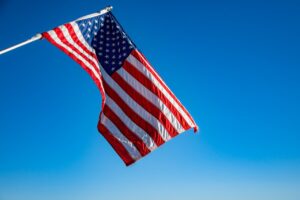USA Job Grant Visa Sponsorship Opportunities in 2025/2026

For foreign nationals aspiring to work in the United States, securing a job with visa sponsorship is a crucial step. Visa sponsorship means that a U.S. employer agrees to support your visa application, enabling you to legally work in the country. In 2025 and 2026, numerous opportunities exist across various visa categories, each with specific requirements and benefits. This guide explores the main visa sponsorship options, eligibility criteria, industries with high sponsorship potential, and practical tips for finding sponsored jobs in the USA.
What Is Visa Sponsorship?
Visa sponsorship occurs when a U.S. employer files a petition with U.S. Citizenship and Immigration Services (USCIS) to hire a foreign worker. The employer commits to supporting the visa application process, proving that the job cannot be easily filled by a U.S. worker and that the foreign employee meets the role’s qualifications. This sponsorship is mandatory for most work visas and is the legal pathway for foreigners to work in the U.S.
Key Visa Types for Job Sponsorship in 2025/2026
Several visa categories dominate the sponsorship landscape, each catering to different job types and qualifications:
-
H-1B Visa (Specialty Occupations):
Designed for professionals in fields like IT, engineering, healthcare, and finance. Applicants must have a bachelor’s degree or higher in a relevant field and a job offer from a U.S. employer willing to sponsor them. The visa is initially granted for three years and can be extended for another three years. -
L-1 Visa (Intra-Company Transfers):
For employees transferring within the same multinational company to a U.S. office. Requires at least one year of employment with the company and a managerial or specialized knowledge role. Duration can be up to seven years depending on the position. -
O-1 Visa (Individuals with Extraordinary Ability):
For people with exceptional talent in sciences, arts, education, or athletics. Requires proof of extraordinary achievements and sponsorship by a U.S. employer or agent. -
H-2B Visa (Temporary Non-Agricultural Workers):
For seasonal or temporary jobs in industries like hospitality, construction, and landscaping. Employers must prove labor shortages in the local workforce. -
EB-2 and EB-3 Visas (Employment-Based Green Cards):
These are permanent residency options for professionals and skilled workers, requiring employer sponsorship and labor certification approval.
Who Qualifies for Visa Sponsorship?
To qualify for visa sponsorship, candidates generally must:
-
Have a valid job offer from a U.S. employer willing to sponsor their visa.
-
Meet the educational and professional qualifications for the role.
-
Pass background and security checks.
-
Demonstrate that their employment will not negatively impact U.S. workers’ wages or job opportunities.
Industries with high demand for foreign talent include technology, healthcare, engineering, finance, and research. These sectors often face domestic skill shortages, making them more open to sponsoring foreign workers.
How Employers Sponsor Work Visas
The sponsorship process involves several steps:
-
Labor Condition Application (LCA):
The employer files an LCA with the Department of Labor, attesting to fair wages and working conditions. -
Petition Filing:
The employer submits Form I-129 (Petition for a Nonimmigrant Worker) to USCIS along with supporting documents proving the candidate’s qualifications and job legitimacy. -
Payment of Fees:
Employers bear the costs of filing fees, fraud prevention fees, and sometimes premium processing fees. -
Visa Application and Interview:
After USCIS approval, the foreign worker applies for a visa at a U.S. consulate, attends an interview, and provides necessary documentation. -
Entry and Work Authorization:
Once approved, the employee can enter the U.S. and begin work, with the employer responsible for maintaining compliance with visa conditions.
Finding Visa Sponsorship Jobs in the USA
Job seekers should employ a strategic approach:
-
Use Official Resources:
The USCIS H-1B Employer Data Hub lists companies that have sponsored H-1B visas, helping identify potential employers. -
Target High-Demand Industries:
Focus on sectors like IT, healthcare, engineering, and finance, where visa sponsorship is more common. -
Network and Apply Directly:
Engage with U.S.-based recruiters, attend job fairs, and apply directly to companies known for sponsoring visas. -
Leverage Specialized Job Boards:
Some websites and platforms focus exclusively on jobs offering visa sponsorship. -
Prepare Thorough Documentation:
Ensure all educational, professional, and personal documents are complete and accurate to avoid delays.
Challenges and Considerations
-
Annual Quotas:
Some visas, especially H-1B, have limited annual caps, making the process competitive. -
Time-Consuming Process:
Sponsorship involves multiple steps and can take several months. -
Employer Commitment:
Employers must be willing to invest time and money, which means job seekers should demonstrate strong qualifications and fit. -
Changing Immigration Policies:
Stay updated on U.S. immigration laws as policies can affect visa availability and requirements.
Conclusion
Visa sponsorship remains a vital gateway for foreign nationals seeking employment in the U.S. in 2025 and 2026. Understanding the types of visas available, eligibility criteria, and the sponsorship process can significantly improve your chances of success. By targeting industries with high demand, leveraging official resources, and preparing meticulously, international job seekers can find rewarding opportunities that lead to a fulfilling career in the United States.
If you are serious about working in the U.S., start early, stay informed, and consider consulting immigration professionals to navigate the complex visa sponsorship landscape effectively. With the right approach, 2025/2026 can be your year to secure a U.S. job with visa sponsorship.
This overview is based on current data and guidelines from reputable sources as of mid-2025.
